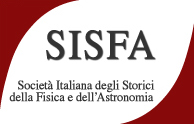Speaker
Description
The Path of Science in Arcetri is being set up: it is a museum itinerary on the hill of Arcetri, near Florence, which includes the old headquarters of the Physics Department of the University, the National Institute of Optics (INO), the Arcetri Astrophysical Observatory (OAA-INAF) and the Villa, where Galileo spent the last years of his life.
As part of this project, a small museum will be located in the premises housing the old particle accelerator KN3000. This stage of the path will focus on the history of particle and nuclear physics in Florence, from about 1930 to the beginning of the new millennium.
In recent months, we fortunately recovered at the Fondazione Scienza e Tecnica in Florence some large Geiger tubes and a number of different vacuum tubes that had belonged to the University's Institute of Physics. In this context, we considered to reconstruct the Rossi's coincidence circuit, which had been conceived just within the walls of the Arcetri Institute. Apart from the power supply for vacuum and Geiger tubes based on modern technology, the design approach was as philological as possible. The apparatus will be part of the detectors of background radiation and cosmic rays, running in the museum and showing the relevant spectra and counting rates to visitors.
In this communication we describe the phases of design, assembly and test of the circuit, which is actually fully efficient and allows the detection of cosmic rays, providing realistic estimates of their flux at the ground level.

